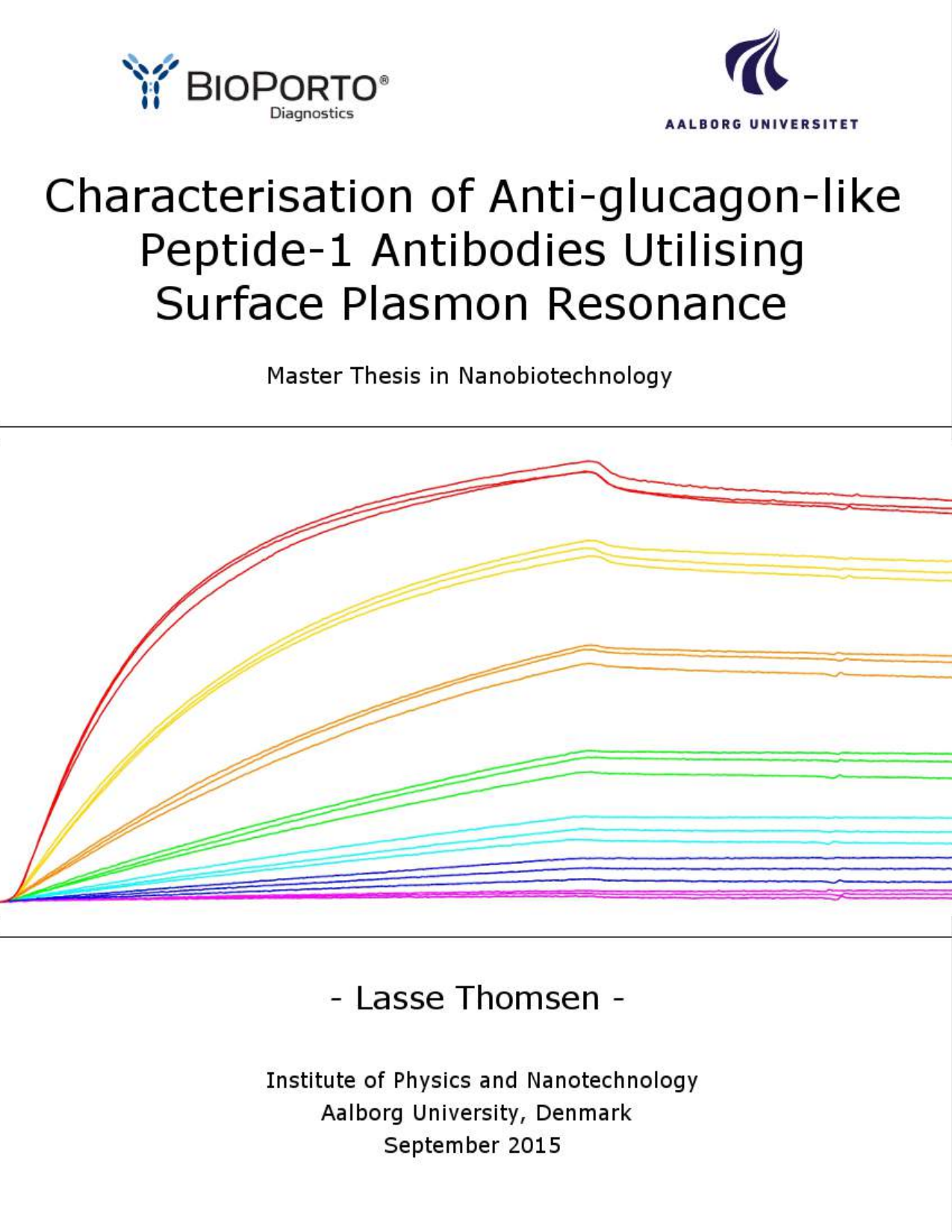
Characterisation of Anti-glucagon-like Peptide-1 Antibodies Utilising Surface Plasmon Resonance
Translated title
Karakterisering af anti-glucagon-like peptide-1 antistoffer ved brug af overflade plasmon resonans
Author
Term
4. term
Education
Publication year
2015
Submitted on
2015-09-16
Pages
104
Abstract
I dette speciale blev alsidigheden af overflade plasmon resonans benyttet til at karakterisere anti-GLP-1 antistoffer kinetisk, termodynamisk og når antistoffet benyttes som 'sandwich' antistof. Antistofferne udviste bindings affiniteter af 2.93*10^(-8)-3.56*10^(-7) M. Interaktionen var fundet entalpy-dreven, hvilket beskriver formationen og stabiliseringen af hydrogen bindinger ved lavere temperature, som yderligere medfører højere bindings affiniteter. Antistoffer benyttet som sandwich antistoffer udviste øget bindings affiniteter af 1.21*10^(-9)-4.87*10^(-9) M. Parvis epitope kortlægning var udført for at undersøge sandwich potentiale af forskellige kombinationer og specificiteten af antistofferne. Resultaterne viste en specifik rækkefølge hvorpå antistofferne bandt sig, startende fra N-terminalen: ABS 033-04, HYB 147-13, HYB 147-12, HYB 147-08 and ABS 047-03. Overflade plasmon resonans tilbyder en lang række fordele over ELISA, men kræver tilgengæld betydelig optimisering for at producere brugbare resultater.
The thesis explored the versatility of surface plasmon resonance to characterise anti-GLP-1 antibodies through kinetic, thermodynamic and sandwich analysis. The antibodies displayed affinities in the range of 2.93*10^(-8)-3.56*10^(-7) M. The interactions were found enthalpy driven, describing the formation and stabilisation of hydrogen bonds at lower temperatures and consequently higher affinities. Furthermore, antibodies displayed enhanced affinities of 1.21*10^(-9)-4.87*10$^(-9) M when serving as sandwich antibodies. In addition, pair-wise epitope mapping was performed to investigate sandwich combination potential and specificity of the antibodies. The results suggested a specific epitope recognition order starting from the N-terminal of ABS 033-04, HYB 147-13, HYB 147-12, HYB 147-08 and ABS 047-03. In comparison with enzyme-linked immunosorbent assay, surface plasmon resonance offers several advantageous but require considerable amount of optimisation to produce valid results.
Documents
